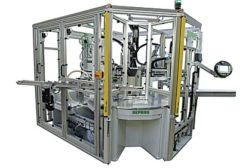Home » automatic screwdriving
Articles Tagged with ''automatic screwdriving''
New Technologies to Shine at Assembly Show
A host of innovative new technologies will be unveiled next month at the Assembly Show, the only event dedicated exclusively to assembly technology.
September 10, 2013
Rotary Indexer Assembles Hinges for Car Doors
This eight-station automatic system produces a hinge in less than 10 seconds.
June 3, 2013
New Developments in Robotic Screwdriving
Robotic screwdriving offers a flexible alternative to offshore production.
February 5, 2013
Automatic Screwdriving
Improving Throughput in Screwdriving Operations Is Not Impossible
October 1, 2012
Never miss the latest news and trends driving the manufacturing industry
Stay in the know on the latest assembly trends.
JOIN TODAY!Copyright ©2024. All Rights Reserved BNP Media.
Design, CMS, Hosting & Web Development :: ePublishing









